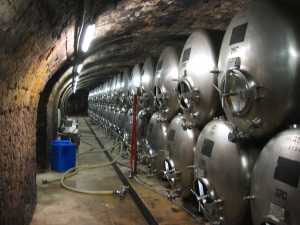Riesling Boom in the U.S.

In contrast to the downward economic trend worldwide, German wine producers are increasing their exports to more than 120 countries. The latest data from the Federal Bureau of Statistics shows that between April 2002 and May 2003 there was an increase in the value of exports of about 5.6%, around 377 million Euros.
Armin Göring, director of the German Wine Institute (DWI) based in Mainz, reports a boom in exports to the USA: "German Riesling in the US is demanded as never before. Exports have increased by about 36% over the last year and this with an average price of 8.44 Euros per liter. Data shows that we are mainly selling noble aromatic Riesling Spätlesen and Auslesen." Therefore the US is now the second largest export market. Japan (+2%) and the Netherlands (+13%) have been left far behind. The trend is also continuing this year. Many US importers are announcing, after an increase of 10% in the first quarter of 2003, that they have sold out of the 2001 vintage and 2002 cask wines. "Top German wines are regaining the reputation they deserve. I am very optimistic that this situation will continue for quite some time, and that we can also convince consumers about our great dry wines. Many restaurants have already discovered that harmonious Rieslings are the ideal menu companion."
England is still no.1
The most important export market is still the UK, where more than 36% of German wine exports go. In addition, there are a lot of Britons who travel to the French channel ports, especially Calais, to buy their wines to avoid the UK's high wine duty. Those 6.1% of German wine exports, which elevate France to the fifth most important wine export market, are mainly consumed in the UK.
In total exports to the UK have decreased (-10%). Above all consumption of sweet white wines in the entry-level price segment has dropped further. Known as "Liebfraumilch," those wines have been a top export for years. Nowadays they are mainly appreciated by an elderly generation, whose wine drinking frequency is low. Happily, in recent months the British media has discovered Riesling as the new favorite of the wine world. The major supermarkets (Tesco, Marks & Spencer, Waitrose) have reacted to the positive coverage and the renewal of interest from the consumer. In contrast to the U.S., they have added mainly dry, high-value Riesling wines to their stock. This positive development is supported by top British restaurants that have rediscovered that Riesling is the perfect food-matching wine.